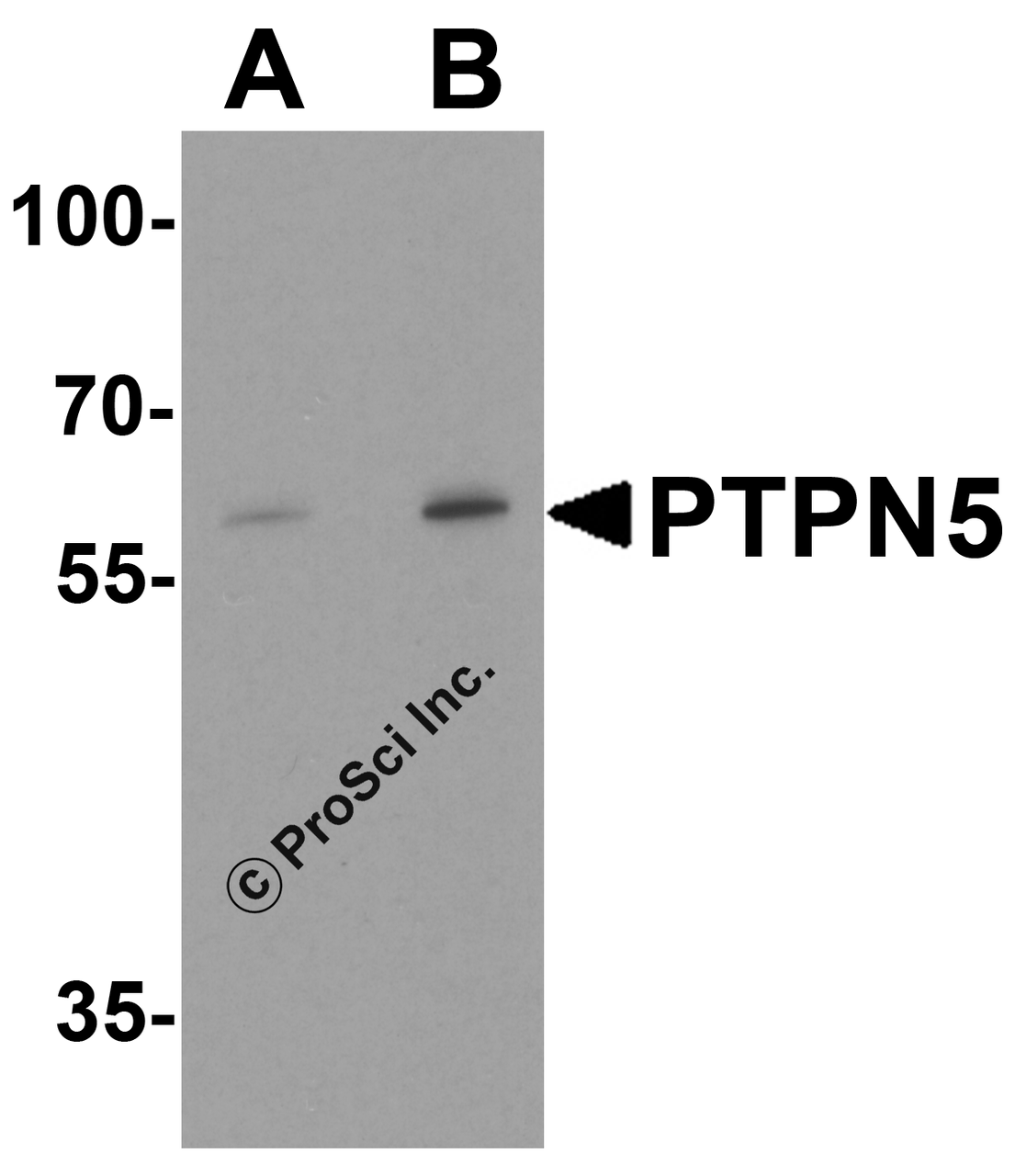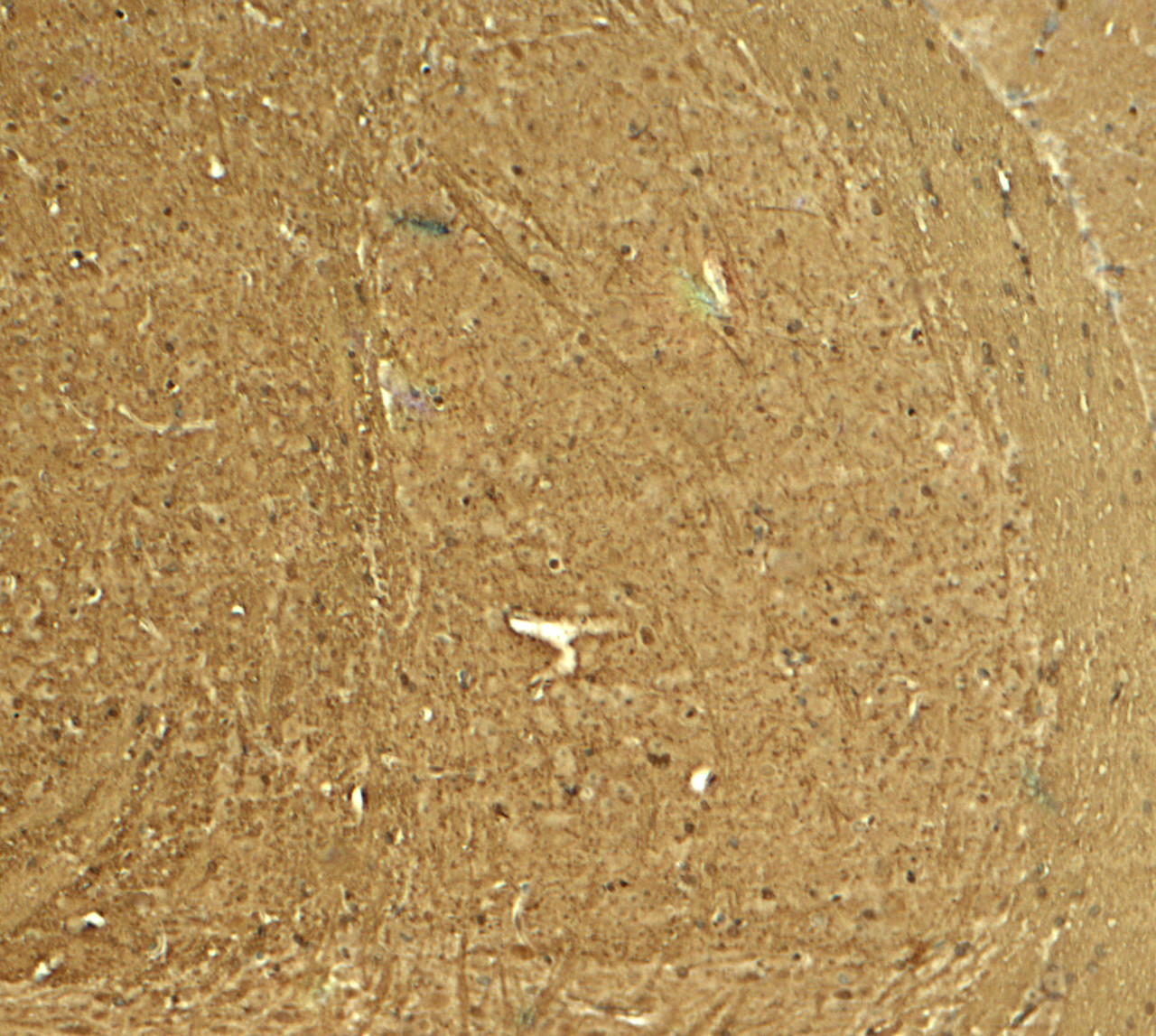Product Description
PTPN5 Antibody | 8013 | ProSci
Host: Rabbit
Reactivity: Human, Mouse
Homology: N/A
Immunogen: PTPN5 antibody was raised against an 18 amino acid peptide near the amino terminus of human PTPN5.
The immunogen is located within amino acids 180 - 230 of PTPN5.
Research Area: Neuroscience
Tested Application: E, WB, IHC-P, IF
Application: PTPN5 antibody can be used for detection of PTPN5 by Western blot at 1 - 2 μg/ml. Antibody can also be used for immunohistochemistry starting at 5 μg/mL. For immunofluorescence start at 20 μg/mL.
Antibody validated: Western Blot in human samples; Immunohistochemistry in mouse samples and Immunofluorescence in mouse samples. All other applications and species not yet tested.
Specificiy: PTPN5 antibody is human and mouse reactive.
Positive Control 1: Cat. No. 1205 - Jurkat Cell Lysate
Positive Control 2: N/A
Positive Control 3: N/A
Positive Control 4: N/A
Positive Control 5: N/A
Positive Control 6: N/A
Molecular Weight: Predicted: 62 kDa
Observed: 60 kDa
Validation: N/A
Isoform: N/A
Purification: PTPN5 antibody is affinity chromatography purified via peptide column.
Clonality: Polyclonal
Clone: N/A
Isotype: IgG
Conjugate: Unconjugated
Physical State: Liquid
Buffer: PTPN5 antibody is supplied in PBS containing 0.02% sodium azide.
Concentration: 1 mg/mL
Storage Condition: PTPN5 antibody can be stored at 4˚C for three months and -20˚C, stable for up to one year.
Alternate Name: Tyrosine-protein phosphatase non-receptor type 5, Neural-specific protein-tyrosine phosphatase, PTPSTEP, Striatum-enriched protein-tyrosine phosphatase, STEP
User Note: Optimal dilutions for each application to be determined by the researcher.
BACKGROUND: The protein tyrosine phosphatase PTPN5, also known as Striatal enriched phosphatase (STEP) , is involved in the regulation of synaptic plasticity and neuronal cell survival, including MAPKs, Src family kinases and NMDA receptors (1) . It is expressed in dopaminoceptive neurons of the central nervous system and multiple forms of PTPN5 show differential enrichment in adult brain regions (2) . NMDA-mediated activation of PTPN5 is an important mechanism for regulation of Erk activity in neurons (3) . Furthermore, PTPN5 is involved in the regulation of both NMDAR and AMPAR trafficking (4, 5) . PTPN5 may play a role in Alzheimer's disease (1) .
 Euro
Euro
 USD
USD
 British Pound
British Pound
 NULL
NULL












